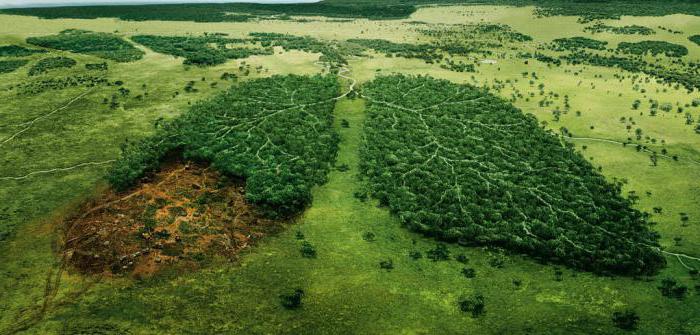The increase in humanity is not an endless process. The main factor against this is the limited natural resources and the exhaustion of the most important of them. Natural resources are all that a person uses in the process of his life. The broad meaning of this expression implies absolutely everything that serves the interests of mankind, and the narrow meaning of this concept includes only sources for material production.
Classification of Natural Resources
Depending on the types of use in the economy, natural resources are divided into industrial and agricultural.
Whenever replaceability is possible, resources are divided into replaceable and irreplaceable.
According to the sources of origin, the resources are biological, mineral and energy.
According to the degree of exhaustion, resources are divided into exhaustible and inexhaustible. Exhaustible natural resources, in turn, are divided into non-renewable and renewable. Often, a third group is distinguished - partially (not fully) renewable. These are such exhaustible natural resources that have a recovery rate much lower than the level of their consumption. Sometimes such restoration stretches over several generations of humanity, and sometimes for millennia. If we talk about exhaustible natural resources, any person will give examples of them. Non-renewable are oil, gas, coal, renewable are representatives of the plant and animal world.
That which is inexhaustible
Inexhaustible resources, mankind knows little, but uses even less at the current time. First of all, this category includes solar energy. In the second - its earthly manifestations: wind and tides.
They are interconnected with solar energy and are sometimes put on a par with it, called the general concept of climate resources. There are also water resources - the endless expanses of the oceans used by mankind by less than one percent. The energy of the earth’s bowels by humans is practically not used, but it is also referred to inexhaustible resources, because it has great potential.
The renewable resource base of the planet
As already mentioned, three categories belong to exhaustible natural resources - renewable, non-renewable, and partially renewable. The first can be restored naturally or with the participation of man. Mankind is helping to artificially clean water and air masses, increase land fertility, restore forests and increase the number of fauna representatives. It should be noted that it is active human activity that has already led to a significant reduction in such a component of the concept of exhaustible renewable natural resources as biological resources. Over the past four hundred years, about a hundred species of animals, more than one hundred species of birds, not to mention representatives of the flora, have disappeared from the surface of the planet.

At the moment, thousands of species of animals, birds, fish, mollusks, plants are threatened with extinction. All this happens in connection with the destruction of their existing habitat - an increase in cities, drainage of swamps, land reclamation, and the creation of reservoirs. In addition, commercial hunting, environmental pollution and other factors of human activity contribute to this. To combat this problem, national parks and reserves, Red Books began to be created, national laws are adopted to reduce environmental pollution.
Partially Renewable Resources
Exhaustible natural resources also include a land fund of more than thirteen million hectares. They give humanity nearly ninety percent of all food. The remaining ten bring forests and oceans. Forests are very necessary for the planet, because they play a leading role in the cycle of carbon and oxygen in the Earth’s atmosphere, help regulate water flow, and avoid soil erosion. But for all their importance, there is an annual decrease in forest area by almost twenty million hectares. And basically this happens “thanks” to the person. Forests are cut down to produce wood of both valuable species and ordinary ones - for the woodworking and paper industries. Deforestation for fuel is thriving in Central Africa, poor in other fuels. This leads to desertification of lands and the advancement of the world's largest Sahara desert inland. In addition, people sometimes reduce the area of forests to increase the area of land.

And although soils are exhaustible renewable natural resources, the recovery period of even one inch of their thickness is almost a millennium. That gives every right to classify them as partially renewable. The degradation of the soil cover of the planet is facilitated, again, by a person who, through his activities, pollutes the soil, contributes to their salinization and waterlogging, desertification and erosion.
Planet non-renewable reserves
Exhaustible non-renewable natural resources are, first of all, all mineral raw materials and fossil fuels.
They are restored in the process of evolution, but, in contrast to renewable and even partially renewable resources, this process occurs imperceptibly for humanity, because the process will take hundreds of thousands, or even millions of years. Exhaustible natural resources, such as metals, can be reused after disposal, and fuel - coal or oil - do not differ in this property. The increasing intensity of development of mineral deposits affects the progressive depletion of the planet’s bowels. Today, one and a half times more resources are already being mined than thirty years ago. And in fifteen years, an increase of another fifty percent is expected.
To avoid depletion of the bowels
In addition to direct mining, the development of mineral resources affects the change in the surrounding topography, contributes to the pollution of soils, air and water, which leads to the death of the plant and animal world. To avoid this, humanity should use such exhaustible non-renewable natural resources as oil and gas in large quantities from the shelves of the oceans.
Extraction from ocean waters and other
mineral resources is possible
, but the necessary technologies should be developed for this. Indeed, today, from the entire table of periodic elements, it is beneficial to extract only sodium, chlorine, magnesium and bromine. While the ocean waters are not ready to give out to the person the remaining chemical elements, it is worthwhile to use the planet's bowels more rationally.